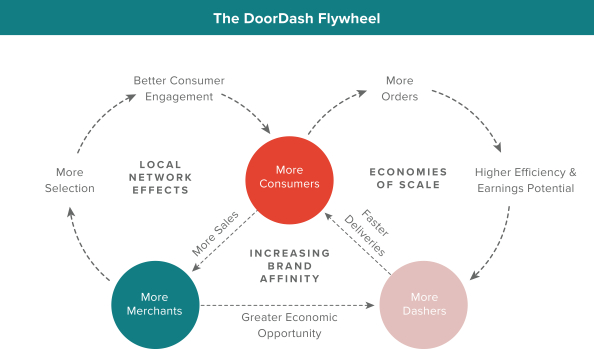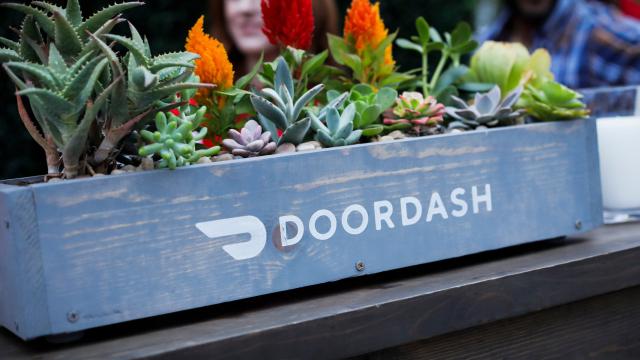DoorDash — everyone’s favourite (albeit exploitative) food delivery service — is apparently hoping to raise a whopping $US3.1 ($4) billion dollars as part of its initial public offering, per a regulatory doc the company filed with the SEC on Friday. 33 million shares priced between $US90 ($121) and $US95 ($128) dollars each are expected to hit the New York Stock Exchange sometime this month.
To give a brief bit of background here, DoorDash first announced that it was taking the first steps towards going public when it confidentially filed a draft of its S-1 back in February. Then at the end of last month, the company put out another filing stating it was looking to raise a nice $US2.8 ($4) billion dollars as part of its IPO — slightly less than the dollar amount we’re seeing with this latest filing.
Back in June, a series of high-profile investments pushed the company’s valuation from $US13 ($17) billion to $US16 ($22) billion. Depending on how much the company raises with this latest round of funding, as CNBC pointed out back in November, the company’s value could easily double that number. It currently commands around 51% of the third-party delivery market, well ahead of rivals like Uber Eats and Grubhub.
That price bump can probably be attributed to the pandemic-fuelled boom in business that courier services like DoorDash have seen over the past few months. Per DoorDash’s filing, the company pulled in a good $US1.92 ($3) billion dollars during the first nine months of 2020, more than triple what it made during the same stretch in 2019. That said, these higher profits didn’t necessarily translate to better conditions for the countless delivery driver powering DoorDash’s business.
Now that we’ve got the numbers out of the way, here’s some of the more… interesting parts of this tome of a filing:
- While most of us probably think about DoorDash as a company based around food delivery, apparently that’s only the beginning. Per the filing, the company sees its future in building out a platform that can “facilitate the local delivery of any item,” food or otherwise. We’re already seeing this play out: back in June, DoorDash announced a partnership with CVS that promised to deliver goodies like over-the-counter meds and — well, anything else you could get in-store — through its platform. Then in August, the company rolled out DashMart, which it called “a new type of convenience store” that delivered both “household essentials” and groceries directly to your door. It’s worth noting here that Instacart, not to be outdone during the run up to its own blockbuster IPO, has partnered with retailers like Sephora, 7-11 and Walmart on similar grounds.
- DoorDash counted over 18 million people buying something through the company’s “local logistics platform” (AKA its app) through all of September. If you count the number of orders processed since DoorDash’s 2013 debut, the number shoots to over 900 million.
- In the filing, DoorDash describes the relationships between the people that use the app, Dashers, and the stores that they’re Dashing from, the company uses the phrase “virtuous cycles.” Apparently, those cycles look like this:

- The company claims that it “actively [listens] to Dashers’ perspectives,” while also investing in “constantly improving their experiences on our local logistics platform,” despite all available evidence pointing to the exact opposite.
- On a similar note, DoorDash mentions that if these Dashers are reclassified as employees — rather than contractors — under federal or state law, its “financial condition” will take a hit. What the company leaves out here is how it, along with companies like Uber and Lyft, spent more than $US200 ($269) million dollars in the push to get California’s Prop 22 passed back in November, assuring the state would keep that contractor classification.
- DoorDash notes it has something of a “history” with net losses, which might tank its profitability in the future. In other words, the company has lost millions every year since its founding: that includes $US667 ($897) million dollars throughout 2019 and $US149 ($200) million in the first nine months of this year.
